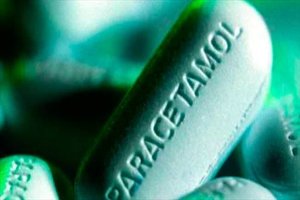- Home
- Editorial
- News
- Practice Guidelines
- Anesthesiology Guidelines
- Cancer Guidelines
- Cardiac Sciences Guidelines
- Critical Care Guidelines
- Dentistry Guidelines
- Dermatology Guidelines
- Diabetes and Endo Guidelines
- Diagnostics Guidelines
- ENT Guidelines
- Featured Practice Guidelines
- Gastroenterology Guidelines
- Geriatrics Guidelines
- Medicine Guidelines
- Nephrology Guidelines
- Neurosciences Guidelines
- Obs and Gynae Guidelines
- Ophthalmology Guidelines
- Orthopaedics Guidelines
- Paediatrics Guidelines
- Psychiatry Guidelines
- Pulmonology Guidelines
- Radiology Guidelines
- Surgery Guidelines
- Urology Guidelines
Paracetamol Use linked with changes in hormonal metabolites and Birth Defects

Paracetamol is one of the most common medications used for management of pain which is considered safe in pregnancy.There is a long history of use of acetaminophen and according to the U.S. FDA, there are over 200 approved drug products containing acetaminophen as an active ingredient.Despite this, there is an incomplete understanding of its adverse metabolic effects. Moreover, there is lack of consensus about the mechanism of action and concern about the possibility of adverse effects on reproductive health.
Dr.Cohen IV and colleagues studied adverse effects of acetaminophen on reproductive health.The researchers have found that there was a depletion of sulfated sex hormones with use of acetaminophen in pregnancy and fetal exposure to the drug could even be linked with risk of male urogenital malformation at birth. It implies that paracetamol use may be linked with changes in certain hormonal metabolites and Birth Defects.
At first, the researchers established the metabolome profile that characterizes use of acetaminophen, and subsequently trained and tested a model that identified metabolomic differences across samples from 455 individuals with and without acetaminophen use. They validated the findings in a European ancestry adult twin cohort of 1880 individuals (TwinsUK), and in a study of 1235 individuals of African American and Hispanic ancestry.
The researchers identified a distinctive pattern of depletion of sulfated sex hormones with use of acetaminophen across all populations. They used a Mendelian randomization approach to characterize the role of Sulfotransferase Family 2A Member 1 (SULT2A1) as the site of the interaction. Although CYP3A7-CYP3A51P variants also modified levels of some sulfated sex hormones, only acetaminophen use phenocopied the effect of genetic variants of SULT2A1. Overall, acetaminophen use, age, gender and SULT2A1 and CYP3A7-CYP3A51P genetic variants are key determinants of variation in levels of sulfated sex hormones in the blood. The effect of taking acetaminophen on sulfated sex hormones was roughly equivalent to the effect of 35 years of aging.
The authors concluded that these findings raise concerns of the impact of acetaminophen use on hormonal homeostasis. In addition, it modifies views on the mechanism of action of acetaminophen in pain management as sulfated sex hormones can function as neurosteroids and modify nociceptive thresholds.
For more details click on the link: DOI: https://doi.org/10.1016/j.ebiom.2018.01.033

Disclaimer: This site is primarily intended for healthcare professionals. Any content/information on this website does not replace the advice of medical and/or health professionals and should not be construed as medical/diagnostic advice/endorsement or prescription. Use of this site is subject to our terms of use, privacy policy, advertisement policy. © 2020 Minerva Medical Treatment Pvt Ltd